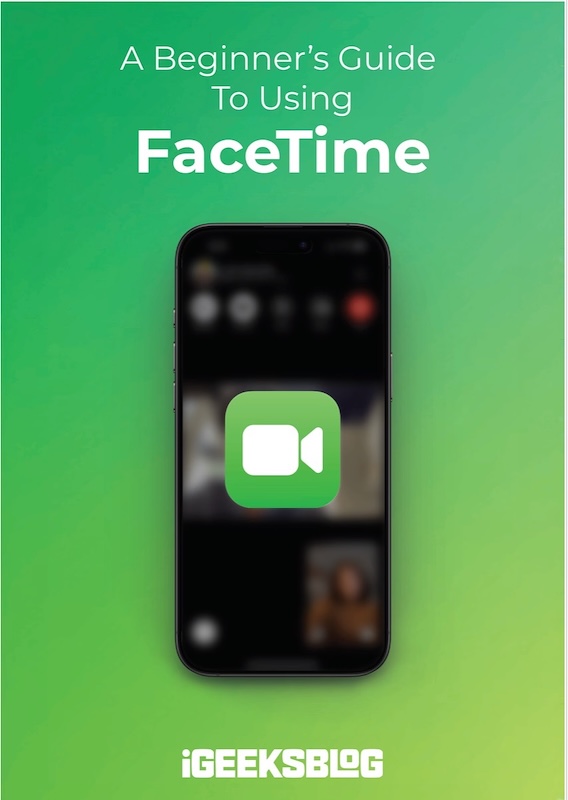
FaceTime Like a Pro
Get our exclusive Ultimate FaceTime Guide 📚 — absolutely FREE when you sign up for our newsletter below.

FaceTime Like a Pro
Get our exclusive Ultimate FaceTime Guide 📚 — absolutely FREE when you sign up for our newsletter below.
Whoop 5.0 or Apple Watch Series 10/Ultra 2? Compare features, battery, health tracking, and pricing to find the best fitness wearable for your lifestyle.
Fitness tracking wearables have evolved far beyond simple step counters. It’s 2025, and fitness is no longer just for athletes; it’s for anyone seeking actionable health data. Among the sea of wearables, the latest Whoop 5.0 and Apple Watch Series 10 and Ultra 2 stand out. While both track health metrics and offer valuable insights, they take very different approaches.
Whoop is a dedicated health and recovery tracker built for data-driven training. Apple Watch, on the other hand, merges health tracking with full smartwatch functionality. If you’re deciding which one fits your lifestyle, this in-depth comparison will help.
| Feature | Whoop 5.0 | Apple Watch Series 10 / Ultra 2 |
|---|---|---|
| Price | $239/year (subscription) | Series 10: $399, Ultra 2: $799 (one-time) |
| Subscription | Required ($30/month or $239/year) | Optional (Fitness+ $9.99/month) |
| Battery Life | 10–12 days | 18–36 hours |
| Display | None | Always-On Retina Display |
| Health Metrics | Strain, Recovery, Sleep, HRV, Respiratory Rate | HR, ECG, Blood Oxygen, Sleep Stages, VO₂ Max |
| Smart Features | None | Notifications, Calls, Apple Pay, Siri |
| App Ecosystem | Whoop app only | Apple Health + third-party apps |
| Best For | Athletes, serious fitness tracking | Everyday users, Apple ecosystem fans, Athletes (Ultra 2) |

Unlike the Apple Watch, whose default band may not suit every outfit, Whoop sports a discreet, screenless profile, built for 24/7 wear. It’s lightweight and comfortable enough to sleep in, making it ideal for continuous tracking.
Apple Watch, however, is a smartwatch first. It’s always-on Retina display delivers rich visuals and quick app access. You can also choose from various sizes, materials, and hundreds of bands, allowing for full personalization.
Bottom line: Whoop is ideal if you want a “set it and forget it” device. Apple Watch suits those who value fitness and style together.

Whoop is engineered for continuous, high-resolution monitoring of sleep, strain, recovery, and stress. The 5.0 model captures heart rate 26 times per second, an upgrade from its previous 100 Hz claim. That data powers its recovery algorithm, generating insights like recovery percentage, VO₂ max, respiratory rate, menstrual cycle tracking, and a new “Healthspan” metric estimating longevity based on recovery patterns.
Apple Watch Series 10 and Ultra 2, on the other hand, specialize in precise health and workout tracking. Features include steps, GPS, heart rate zones, ECG, blood oxygen, wrist temperature, and even built-in sleep apnea detection (pending regulatory approval). New in watchOS 26, Workout Buddy provides AI-powered real-time coaching based on your fitness history and input from Fitness+ trainers.
Bottom line: Whoop delivers deep recovery insights for serious athletes, while Apple Watch balances health, fitness, and coaching for daily users.

Whoop 5.0 offers 10–12 days of battery life in real-world usage. Even better, its clip-on battery pack means you don’t need to take it off to charge, enabling uninterrupted tracking.
Apple Watch’s battery, depending on settings, lasts 18–36 hours. While fast charging helps, it can be inconvenient for overnight sleep tracking unless you remember to top it up before bed.
Bottom line: Whoop is better for continuous health tracking. Apple Watch wins in fast charging but requires more attention.

Whoop requires a subscription, $239/year or $30/month, to unlock its data and analytics. Without it, the device is virtually unusable.
With Apple Watch, there’s no such limitation. While services like Fitness+ require a subscription, core features like ECG, heart rate tracking, and sleep data remain fully functional after the one-time purchase.
Over time, Apple Watch proves more cost-efficient, doubling as a communication tool, productivity aid, and lifestyle accessory.
Bottom line: Whoop is an investment for data-driven athletes. Apple Watch offers flexibility without mandatory costs.

This is where Apple Watch clearly pulls ahead. It syncs with your iPhone, offering notifications, calls, Siri, Apple Pay, Maps, music control, and HomeKit smart home access all from your wrist.
Whoop doesn’t have a screen, and it shows. It’s focused solely on fitness. All sessions must be initiated in the app. There are no on-device controls, alerts, or integrations beyond health tracking.
Bottom line: If you want smartwatch features beyond fitness, Apple Watch is the easy choice.
Whoop’s sensors excel in continuous HRV and sleep tracking, especially during overnight and endurance training. However, it can lose accuracy during high-intensity, jerky movements.
Apple Watch provides high accuracy in heart rate, ECG, and steps. Sleep tracking has improved but still lags behind Whoop’s depth. Calorie estimates are moderately accurate.
Privacy-wise, Whoop anonymizes and encrypts your health data. Apple stores health data on-device or in iCloud, giving users control. Neither company sells data.
Bottom line: Whoop wins for depth and recovery accuracy. Apple Watch offers a strong all-rounder with tight privacy safeguards.
Buy Whoop if you:
Buy Apple Watch if you:
There’s no one-size-fits-all answer. Each device serves a different user base.
If you’re an athlete or biohacker, Whoop is the superior tool for performance and recovery tracking, even with the ongoing subscription cost.
But if you want a multi-functional companion, a fitness tracker, communication device, and productivity assistant, Apple Watch Series 10 or Ultra 2 is the gold standard for iPhone users.
Both devices are at the top of their class, but serve vastly different purposes. Decide whether your goals lean toward deep health optimization or everyday smart connectivity, and the right choice will become obvious.
Don’t forget to comment below and tell us if you’re rooting for Whoop’s recovery insights or Apple Watch’s AI coaching.
Related articles worth reading: